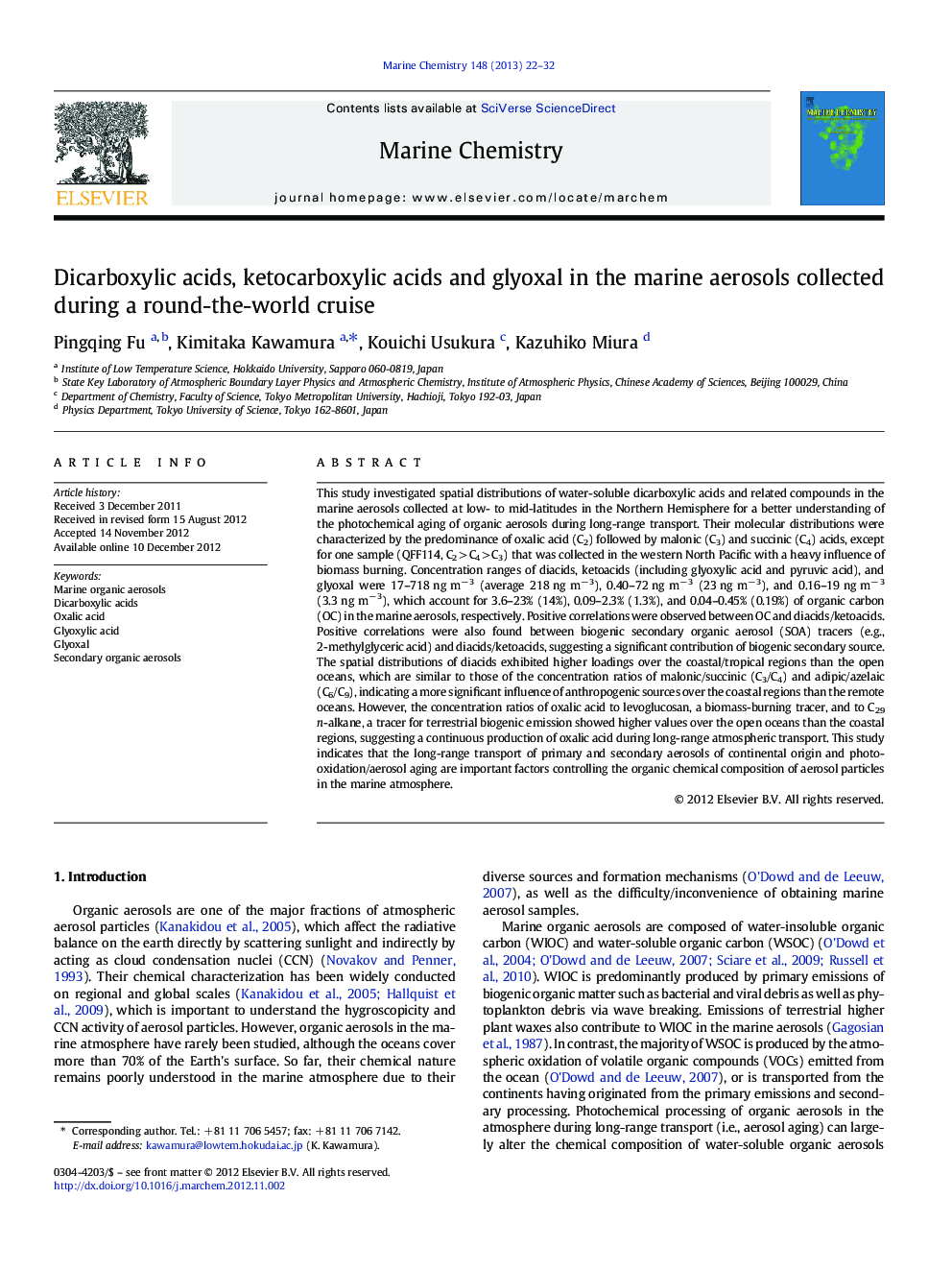| کد مقاله | کد نشریه | سال انتشار | مقاله انگلیسی | نسخه تمام متن |
|---|---|---|---|---|
| 1261619 | 1496687 | 2013 | 11 صفحه PDF | دانلود رایگان |

This study investigated spatial distributions of water-soluble dicarboxylic acids and related compounds in the marine aerosols collected at low- to mid-latitudes in the Northern Hemisphere for a better understanding of the photochemical aging of organic aerosols during long-range transport. Their molecular distributions were characterized by the predominance of oxalic acid (C2) followed by malonic (C3) and succinic (C4) acids, except for one sample (QFF114, C2 > C4 > C3) that was collected in the western North Pacific with a heavy influence of biomass burning. Concentration ranges of diacids, ketoacids (including glyoxylic acid and pyruvic acid), and glyoxal were 17–718 ng m− 3 (average 218 ng m− 3), 0.40–72 ng m− 3 (23 ng m− 3), and 0.16–19 ng m− 3 (3.3 ng m− 3), which account for 3.6–23% (14%), 0.09–2.3% (1.3%), and 0.04–0.45% (0.19%) of organic carbon (OC) in the marine aerosols, respectively. Positive correlations were observed between OC and diacids/ketoacids. Positive correlations were also found between biogenic secondary organic aerosol (SOA) tracers (e.g., 2-methylglyceric acid) and diacids/ketoacids, suggesting a significant contribution of biogenic secondary source. The spatial distributions of diacids exhibited higher loadings over the coastal/tropical regions than the open oceans, which are similar to those of the concentration ratios of malonic/succinic (C3/C4) and adipic/azelaic (C6/C9), indicating a more significant influence of anthropogenic sources over the coastal regions than the remote oceans. However, the concentration ratios of oxalic acid to levoglucosan, a biomass-burning tracer, and to C29n-alkane, a tracer for terrestrial biogenic emission showed higher values over the open oceans than the coastal regions, suggesting a continuous production of oxalic acid during long-range atmospheric transport. This study indicates that the long-range transport of primary and secondary aerosols of continental origin and photo-oxidation/aerosol aging are important factors controlling the organic chemical composition of aerosol particles in the marine atmosphere.
► Dicarboxylic acids and related compounds were measured in marine aerosols.
► Diacids accounted for 3.6–23% (mean 14%) of organic carbon in marine aerosols.
► Correlations between diacids and biogenic SOA tracers were discussed.
Journal: Marine Chemistry - Volume 148, 20 January 2013, Pages 22–32